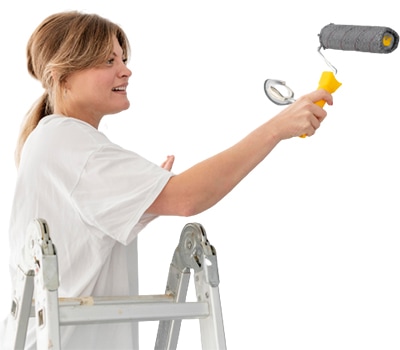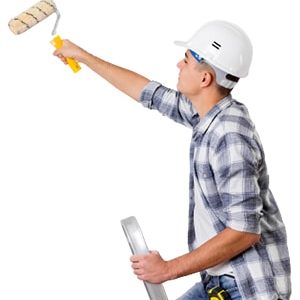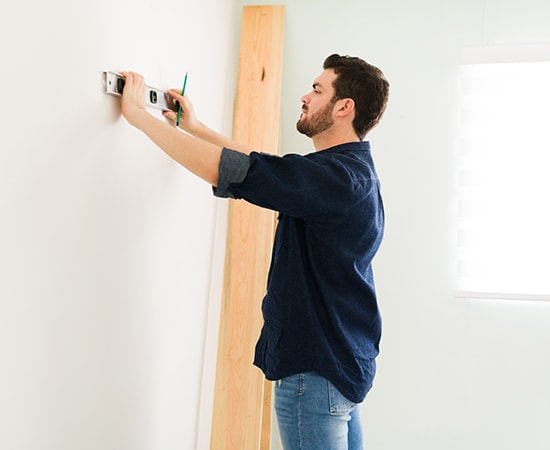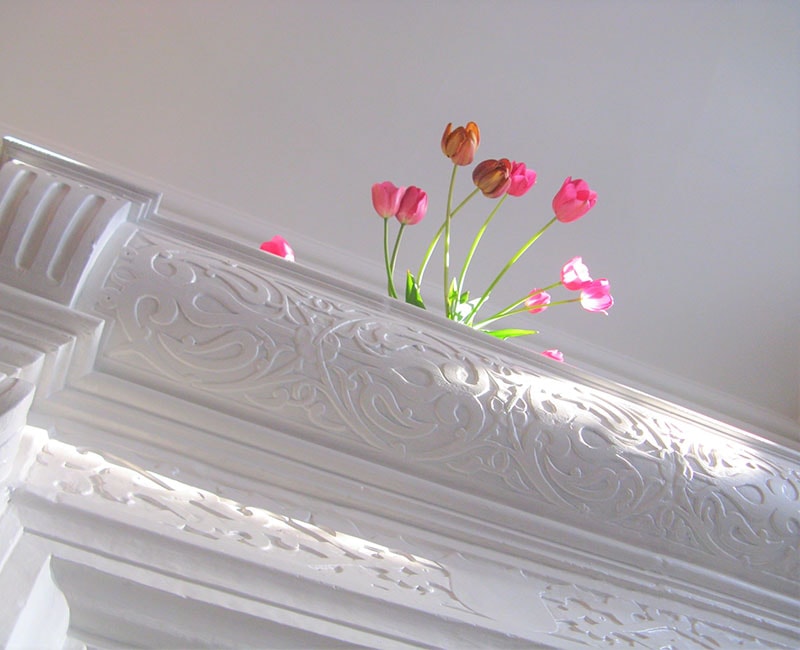What we do
Acoustic Ceiling Installation
Plasterboard ceiling Installation
Bulkhead Installation
Suspended mineral fibre tile Installation
Suspended versalux ceiling Installation

Suspended Ceilings in Melbourne
A suspended ceiling is a type of false ceiling installed on the underside of rafters or beams and fastened to them. Suspended ceilings are often used because they create an uninterrupted horizontal surface that can be easily finished with standard wall treatments, such as drywall panels, and acoustic tile packages.
Suspended ceilings offer an excellent, cost-effective solution for all building shapes and sizes. This means that if you find a small hole in the ceiling or something like it on your building’s floor – plastering can easily fix this!
Installing suspended ceilings is a very simple process. First, you’ll need to hang the ceiling from the joists in your building’s ceiling space with cables and brackets attached to it. This will be done by suspending them into positions in the space between each joist. Once this has been achieved, then plasterers can come back and apply a layer of plasterboard onto that coated surface using a large grid system connected on both sides for strength purposes called ‘suspended grids’.

Assessment, diagnosis and solution
We’ll not only make the repair, but we’ll conduct a thorough initial assessment to determine the source of the problem, preventing the issue from reoccurring and preventing you from further expense.
We run on local time
We pride ourselves on being a locally owned and run company, with a local office and local employees. When we say we’re going to be somewhere at a certain time, we’ll be there.

What We Promise
EXPERIENCED PROFESSIONALS
QUALITY, EVERY TIME
ALL JOBS COMPLETED ON TIME!
100% SATISFACTION GUARANTEED!
Highest quality results, guaranteed and warrantied
Our wall and ceiling fixers use only the highest quality products when repairing or building new, and all our building materials are sourced from trusted and reputable suppliers. We’re so confident that the results we produce are of the highest quality, and that our repairs and installations are made to last, that we offer a 10-year workmanship warranty on any job or work we complete.
We’re a one-stop-shop
We do ceiling repairs a little differently from other ceiling fixers in Melbourne and Victoria. We’re a one-stop shop, offering painting and electrical services on top of our wall and ceiling services.

Many Years of Experience
We have been in the plasterboard business for many years and are able to provide you with excellent advice on which acoustic plasterboards are right for your project.

Suspended Ceilings
For new construction, renovation, and refurbishment projects, we offer complete planning and installation of suspended ceilings and ceiling tiles.
Suspended ceilings improve the heat and noise insulation in your commercial property while lowering energy costs. A properly positioned and installed suspended ceiling restricts the amount of space that must be heated or cooled, resulting in the less frequent use of the HVAC system and lower energy costs.
Our Melbourne-based company offers specialized suspended ceiling tiles installation services throughout Victoria. In order to ensure that you get the most out of your installation, we offer advice and suggestions as professionals who have installed many suspended ceilings for commercial spaces.
For offices, homes, shops, small businesses, and public service organizations, our team of skilled professionals works to provide suspended ceilings, lighting, and partitions.
Contact us right away to learn how we can install chic and functional suspended ceiling tiles to improve your home, office, or just about any environment.
High-Quality Service
Our team is an expert in plastering and knows all the ins and outs of a plasterer’s job. You don’t have to worry about the time it takes for us to complete your project because we know how important it is. We will finish plastering as soon as possible, with a high-quality service that you deserve
FAQ
So how do you know if a plasterer is the right professional for you? A plasterer will be able to provide a smooth surface, whether on walls, ceilings or partitions, for either functional or decorative purposes. A plasterer will also be able to perform the following tasks:
- Apply coats of plaster: Plastering specialists will apply plaster to interior walls and partitions, using hand tools, portable power tools or a combination of the two.
- Create decorative textures: Plasterers can create textures and decorative patterns for an ornate finish.
- Clean and prepare surfaces: Plastering specialists will prepare surfaces for plastering by thoroughly cleaning them and fixing any cracks or chips found. They will also create the mortar mix, ready for application.
The time is takes to plaster a room depends on what’s required, and on the size of the room. We can give you an estimated completion time when we come and look at the job and provide a quote.
Generally, it will take around 3-5 days for plastering to dry out however there are a few factors that will affect the drying time of your plaster. The thickness of the plastering will affect the time it takes for the plaster to dry out. If there are any areas that require additional work, for example, if there is a void, a large crack, or a gap which requires filling then a base coat or bonding plaster may be required before skimming. This means that certain areas may be thicker than others and therefore require more time for the plaster to thoroughly dry out. If there has been significant filling it could take as long as two weeks for the plaster to be thoroughly dry and ready for painting and decorating. Another factor that will affect the drying time for your plastering work is the room temperature and ventilation. It can be tempting to turn the heating right up to speed up the drying process but this is not recommended. Excessive heat will cause the plaster to dry too quickly which may result in cracking or hazing. The best condition for allowing your newly plastered walls/ceiling to dry is to provide some ventilation by opening a couple of windows slightly. You can put the heating on, however, we recommend you keep this at a low temperature for a number of days after the plastering is completed. This will help with the drying process whilst avoiding the plaster cracking.
The most common types of plaster are a composition of gypsum, lime or cement with water and sand. The plaster is typically manufactured as a dry powder and then worked to form a stiff paste by mixing in water before application.
Plastering is most definitely a skill, so you should understand that before you begin. Any skill can be learnt, but it's going to take you a bit of time and a bit of practise. ... With a bit of time, learning and careful work, you can totally tackle plastering through DIY! You've just got to put the effort in to learn how.
Brands We Partner and Work With

Jet Master

Haymes Paint

Colorbond

Harvey Norman

E&S

Miele

Hume doors

Monier Roof Tiles

Lennox

Polytec

Rinnai

Unitex

Caesarstone

Lemaar Door hardware

Oliveri

Gowling stairs

Austral masonry

Melbourne Floors

Hebel

Beaumont Tiles

A&L windows

Bradnams Windows

James Hardie

Bowens

CSR